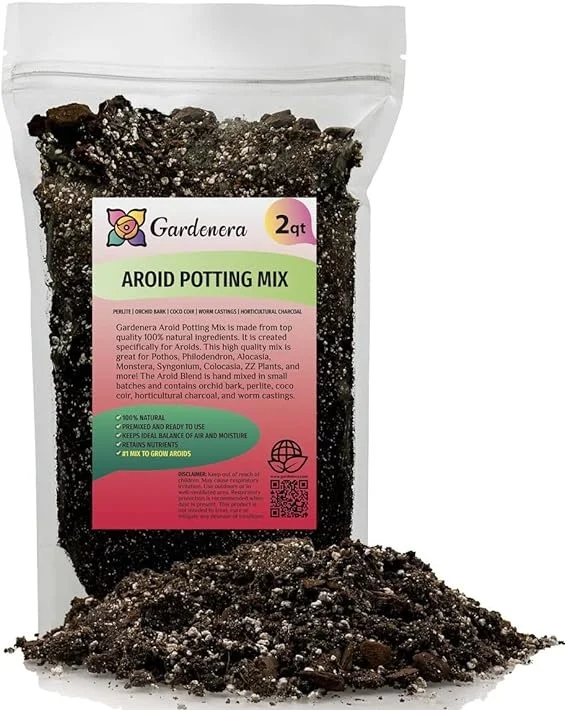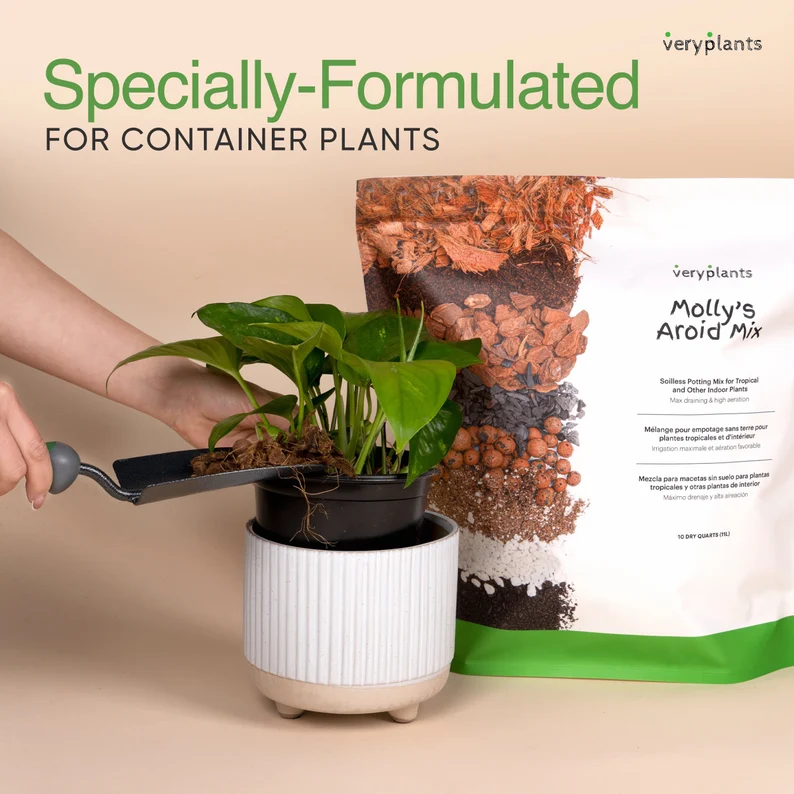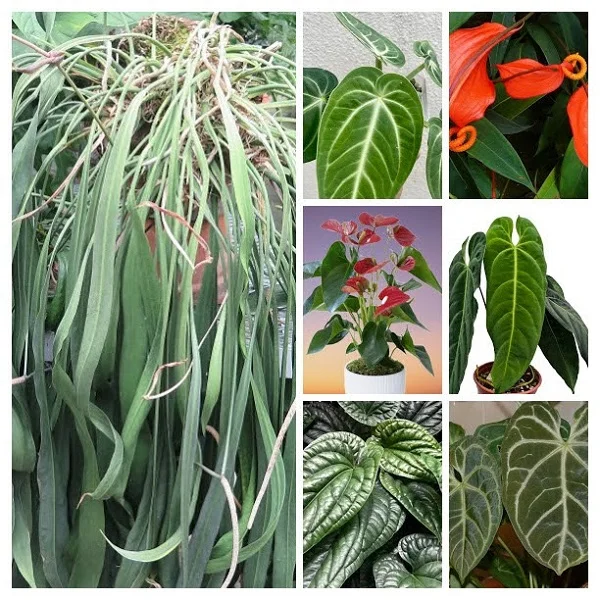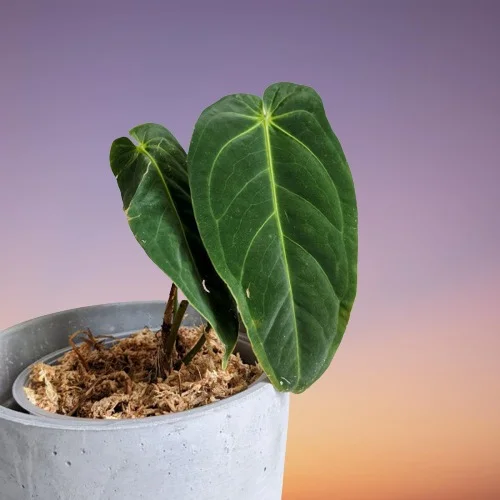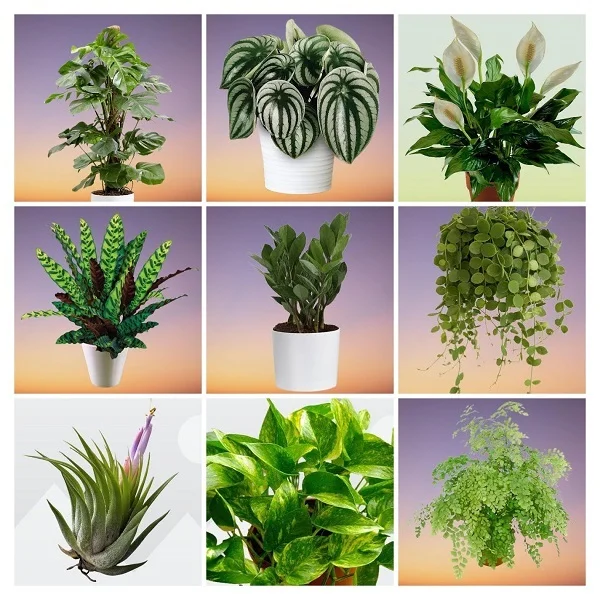Anthurium magnificum Indoor Care, Propagation, Problems and Solutions
Some links in this post may be affiliate links
Anthurium magnificum is among the rare Anthurium varieties and bears large, cordate, dark-green, velvety leaves with burgundy leaves and prominent veining.
To keep the Anthurium magnificum blossoming give it bright, indirect light, warm and humid conditions and moist, loose, fertile, well-drained aroids soil coupled with regular feeding in the growing season.
Anthurium magnificum is similar to Anthurium crystallinum. The distingushing feature is in the shape of petioles which are quadrangular or C-shaped unlike the rounded ones in Anthurium crystallinum.

Botanical name: Anthurium magnificum
Family: Araceae
Origin
Anthurium magnificum is native to Colombia, South America where it is found growing terrestrially on the forest floors as an understory plant.
Size
The leaves in Anthurium magnificum are up to 18-24 inches long and 20 inches wide when mature which places it among the large-leafed plants ideal for a bold statement in any space.
Toxicity
Like other Anthuriums, Anthurium magnificum is toxic to both humans and pets. Anthuriums are known to contain oxalate crystals which can cause digestive distress, breathing problems and skin irritation. Keep the plants away from children and pets. Always wear gloves when handling these plants and wash your hands thereafter.
Where to Buy
If you are looking to add Anthurium magnificum to your collection, they are available online on Etsy (Link to Etsy).
Anthurium magnificum Care Indoors
Anthurium magnificum flourishes in bright indirect light, moderate warmth of 18-270C, humidity of 60-70% and consistently moist, fertile, aroids potting mix coupled with monthly feeding during the growing period.
Anthurium magnificum requires removal of yellow and dead leaves to keep it tidy as well as minimize pest and disease infestations. Repotting is only needed when it is pot-bound. Keep reading for more on the best growing conditions for this plant and how to obtain them.

Light Requirements
Anthurium magnificum requires bright indirect light (dappled light). Keep it away from direct sunshine as it can scorch the leaves leaving it with ugly, brown marks.
If the natural lighting in your home is not adequate, use grow lights to supplement it. Take a look at these full spectrum grow lights available on Amazon.
Rotate the pot regularly to ensure that the plant receives light on all sides for uniform growth and avoid lop-sided growth.
Temperature and Humidity
Anthurium magnificum requires average warmth of 18-270C. Keep it away from cold drafts to prevent sudden changes in temperature as they can cause reduced growth.
Above average humidity of 60-70% is perfect for Anthurium magnificum. However, if the humidity is below 50%, set the pot on a wet pebble tray or use a cool mist humidifier. Check out these techniques on how to raise humidity for houseplants.
Occasionally damp wipe the leaves with a soft cloth to get rid of dust. Dry any water droplets on the leaves and ensure that there is good air circulation to prevent fungal infestations.
Watering
Water Anthurium magnificum thoroughly during the growing season when the top 1-2 inches of soil feels dry to the touch and keep the soil consistently moist.
Reduce watering in the cold season as growth is minimal to maintain the soil slightly moist but do not let it dry out completely.
Use tepid water to avoid shocking the plant. In addition, use chlorine-free water as the plant is sensitive to chlorine and other chemicals dissolved in water. Avoid wetting the foliage as it can lead to fungal diseases.
Make sure that the pot has a drainage hole and always empty the saucer after watering to prevent the soil from getting soggy as it can result in root-rot and loss of the plant.
Fertilizer
Feed Anthurium magnificum every 4-6 weeks during the growing period with a balanced, water-soluble fertilizer. Do not feed in the cold season as growth is minimal at this time and feeding it at this time can result in fertilizer burn.
To get eliminate accumulated salts as they can negatively affect growth, regularly run a stream of water through the soil until the water drips through the drainage hole. Allow it to run for a few minutes and repeat the process several times to clear the salts.
Potting Mix
The best potting mix for Anthurium magnificum should be rich in organic matter, loose and well-drained to prevent it from getting soggy while providing the required nutrients. Most potting mixes designed for aroids are ideal for this plant.
Repotting
Repot Anthurium magnificum every 2-3 years at the beginning of the growing season when pot-bound. Use a pot one-size larger than the current one and chunky aroids soil that is rich in organic matter.
Ascertain that the pot has a drainage hole to prevent the soil from getting soggy as it can lead to root-rot and eventual death of the plant. Check out these self watering pots on Amazon.
Pruning
Pruning Anthurium magnificum involves removal of yellow and dead leaves to maintain the plant tidy and to reduce pest and disease infestations.
Cut the leaves at the base of the stem with a sharp sterlized knife or a clean pair of scissors to avoid unnecessary injuries which can result in disease infestations. Cut away any wayward leaves to maintain the shape of the plant.
Propagation
Anthurium magnificum can be propagated during the growing season by plant divison, from stem cuttings, and by air layering.
Read more on How to Propagate Anthurium Plants by 5 Easy Methods
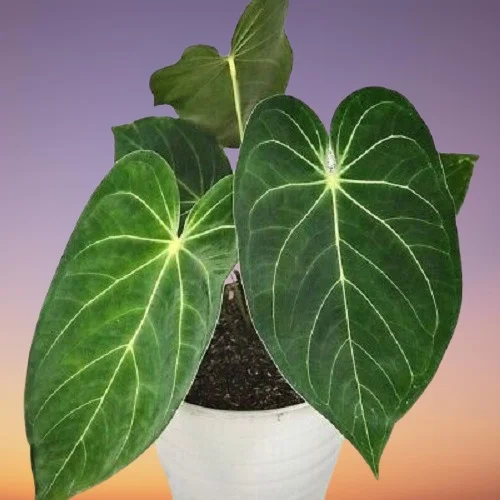
Anthurium magnificum Problems
Anthurium magnificum problems include brown leaves, yellow leaves, brown leaf tips, brown leaf spots, drooping leaves, pests, diseases among others. Keep reading for more on these problems and how to fix them.
Brown leaves
There are many causes of brown leaves in Anthurium including incorrect watering, too little light, improper feeding, poor quality soil, being root-bound, pests, diseases, hot temperatures, age among others.
Pests
Common pests in Anthurium magnificum are spider mites, aphids and mealybugs. Isolate the affected plant to prevent spread to other plants to minimize spread and treat it with neem oil or insecticidal soap as per the manufacturer's instructions.
Diseases
Anthurium magnificum is prone to root-rot disease which is more prevalent in soggy soil brought about by poor soil drainage. To keep root-rot away, maintain the soil moist but not soggy by ensuring that the pot has a drainage hole and that the soil is loose and free-draining. Read more on how to treat root-rot in houseplants.
Yellow leaves
One of the possible causes of yellow leaves in Anthurium magnificum is soggy soil. Maintain the soil moist but not soggy. Ensure that the pot has a drainage hole and the soil is free-draining to prevent the soil from getting soggy.
The second cause of yellow leaves in Anthurium magnificum is cold drafts or cold air. Keep the plant away from cold drafts or place it away from windy doors and windows.
Brown leaf tips
Two possible reasons are responsible for brown leaf tips in Anthurium magnificum. One main reason for brown leaf tips is too low humidity (below 50%). Set the pot on a wet pebble tray or use a cool mist humidifier to increase humidity.
The second possible reason for brown leaf tips in Anthurium magnificum is soggy soil. Maintain the soil moist but not soggy by ensuring that the pot has a drainage hole and the soil is well-drained that is it drains easily.
Brown leaf spots
The brown leaf spots are sun scorch marks caused by exposure of the Anthurium magnificum to hot direct sunlight. Move the plant to a more shaded place or use a curtain to filter the sunlight.
Drooping leaves
There are four possible causes of drooping leaves in Anthurium magnificum. One possible cause of drooping leaves is low humidity. To elevate humidity, set the pot on a wet pebble tray or use a cool mist humidifier.
The second possible cause of drooping leaves in Anthurium magnificum is incorrect watering; either underwatering or overwatering. Keep the soil moist at all times during the growing season and never allow the soil ball to dry out completely or to be soggy.
The third possible cause of drooping leaves in Anthurium magnificum is too high temperature or exposure to hot direct sunlight. Keep the plant away from hot direct sunlight by filtering the light with a sheer curtain. In addition maintain temperatures within the range of 16-270C.
The fourth possible cause of drooping leaves in Anthurium magnificum is pests and diseases infestation. Regularly inspect your plant and take timely control measures for these pests.
You liked it? Share on social media.
Related Content
Amazon Associates Disclosure
Homeplantsguide.com is a participant in the Amazon Services LLC Associates Program, an affiliate advertising program designed to provide a means for sites to earn advertising fees by advertising and linking to amazon.com.
